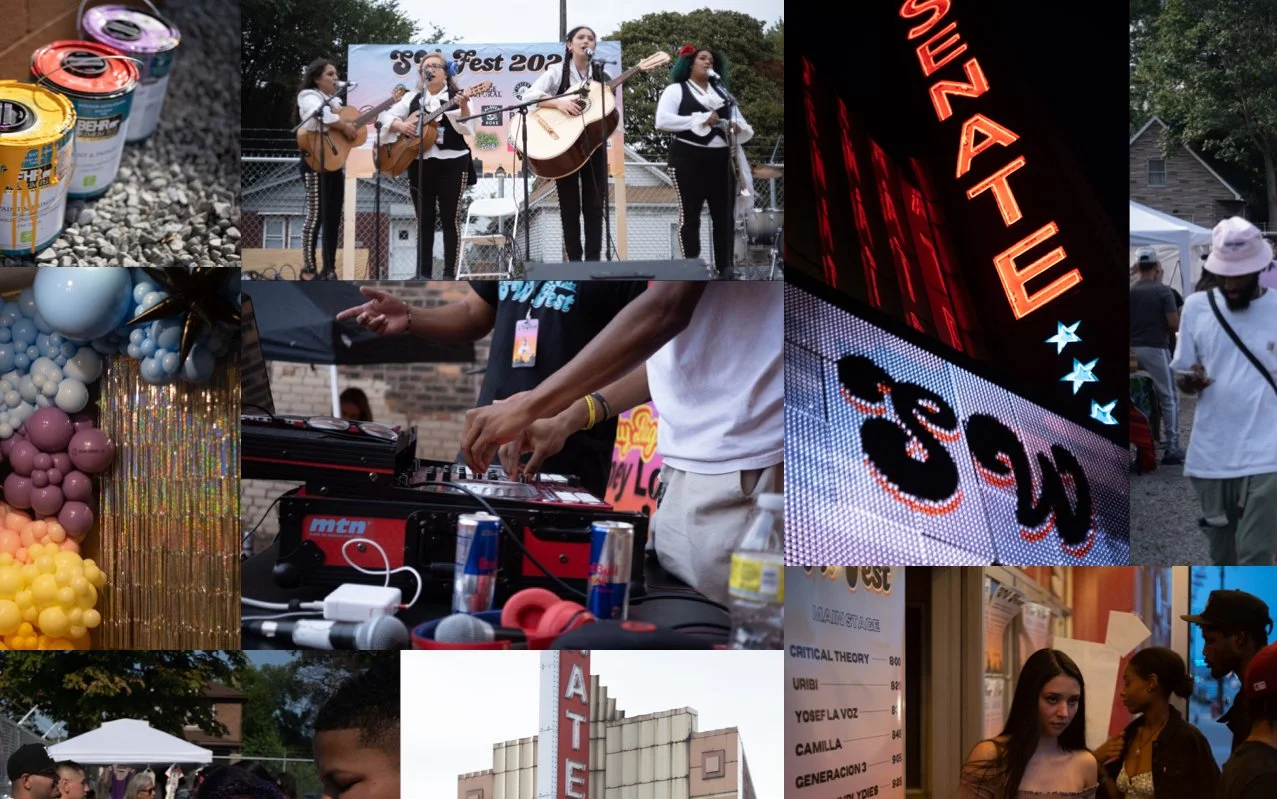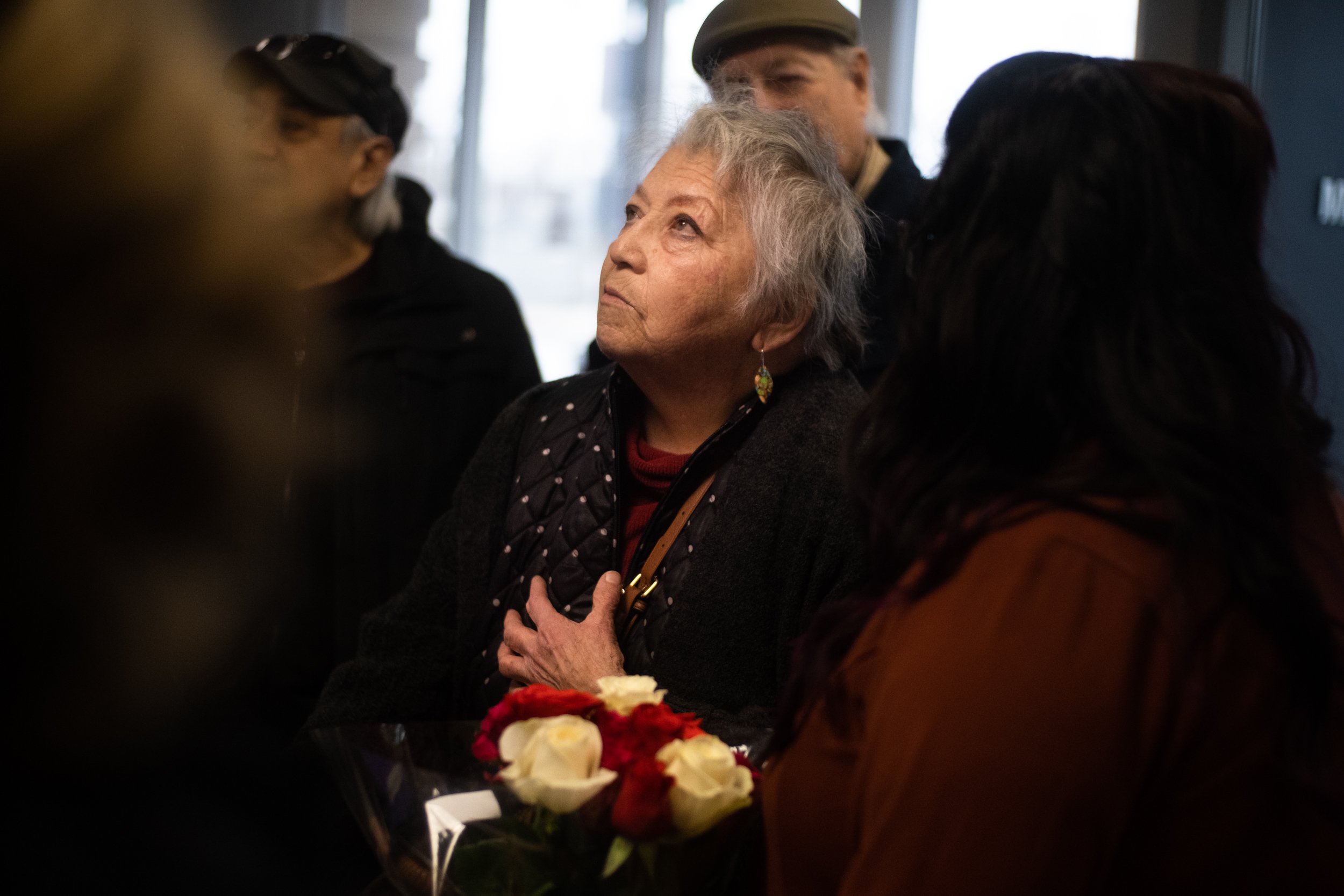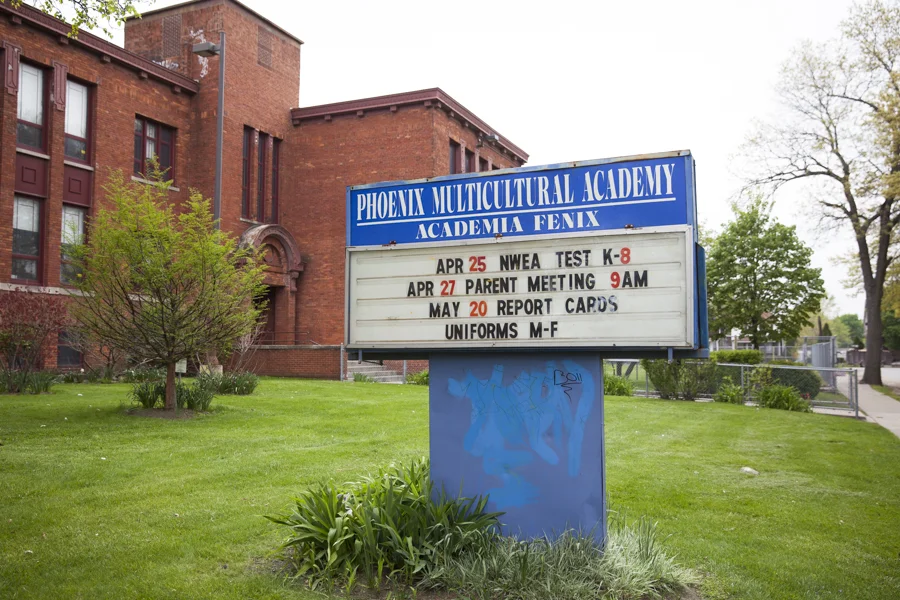Memorial Wall Mural Targeted as Graffiti
This week “the buff”, Detroit’s tactical team responsible for graffiti removal, painted over a powerful community-supported mural that was transforming a local viaduct into a memorial for 8-year-old Laura Fernandez who passed away in August.
Laura Fernandez, 8, paints with her father David at Aerosol Nightmares on Vernor near Waterman on July 14, 2024.
The mural was organized by her father, a local artist, with support from friends and neighbors who offered time, talent, and materials to commemorate Laura and others’ lost loved ones from across the community. He obtained permission to paint the mural site from Detroit’s City Walls project.
Despite this outpouring of collective effort, a city employee deemed it “unauthorized graffiti,” and painted over it—erasing not only the mural but also the healing and solidarity it represented. This painful misstep highlights an ongoing issue in Detroit’s treatment of public art in Southwest Detroit and across the city.
Disjointed Policies Undermine Community Expression
Detroit’s current policies regarding public murals leave neighborhoods vulnerable to arbitrary actions by the city’s buff team, often without warning or consultation. Community-driven mural projects, especially those created in memory of loved ones, offer significant social value, providing spaces for healing and remembrance, and bring communities together.
“Community-driven mural projects, especially those in memory of loved ones, offer significant social value, providing spaces for healing and remembrance, and bring communities together.”
Yet, without clear policies to guide city officials, such works are frequently erased with little to no input from the community, leaving artists and residents feeling disregarded and disenfranchised.
The centerpiece of the memorial wall, ‘Laura’, was part of the mural on Waterman that was painted over by the City of Detroit on Wednesday, October 23, 2024.
Read more about how Detroit’s “graffiti” enforcement has impacted artists and cultural assets over the years:
Contradictions in Detroit’s Public Art Strategy
The frustration over these decisions is magnified by Detroit’s efforts to brand itself as “Mural City USA.” While the city continues to invest heavily in public art projects, it often commissions non-local artists—with some notable exceptions—to create works in more commercially visible areas while frequently criminalizing local artists and the work they produce.
The city’s stance on graffiti highlights a critical contradiction: promoting and profiting from Detroit’s reputation for bold street art, while systematically erasing local expressions of the same culture. This inconsistency devalues Detroit’s grassroots artistic heritage, undermining the community’s ability to shape the visual landscape of their own neighborhoods.
“The city’s stance on graffiti highlights a critical contradiction: promoting and profiting from Detroit’s reputation for bold street art, while systematically erasing local expressions of the same culture.”
Aerosol Nightmares: A Community Response to Policy Gaps
Aerosol Nightmares, a grassroots graffiti-art event, has emerged as a community-led response to Detroit’s restrictive and punitive policies. Through this event, local artists create legal, collaborative art in public spaces, aiming to bridge the gap left by the city’s inconsistent position and support.
The initiative offers an essential platform for local graffiti writers and street artists to showcase their work, fostering a creative and constructive space for community expression, and invite national and international artists to collaborate and build with the local scene. Aerosol Nightmares exemplifies how intentional public art projects can counter the suppression of local voices and nurture Detroit’s unique street art legacy in ways the city’s policies currently fail to support.
A Path Forward: Policy Reform for Community Empowerment
For Detroit to live up to its reputation as a vibrant art hub, city officials must establish clear, supportive policies that empower neighborhoods and local artists to create public art without fear of arbitrary censorship and other forms of punishment. Policies allowing communities to exercise control over neighborhood art projects would honor the cultural and personal significance of these works.
“[Detroit] must establish clear, supportive policies that empower neighborhoods and local artists to create public art without fear of arbitrary censorship and other forms of punishment. ”
By prioritizing artist and community agency, Detroit can fully embrace its role as a steward of the unique visual storytelling that makes the city’s art scene a vital part of its identity.
Only then can Detroit authentically honor and uplift its local artists while fostering the creative energy it seeks to showcase to the world.






























